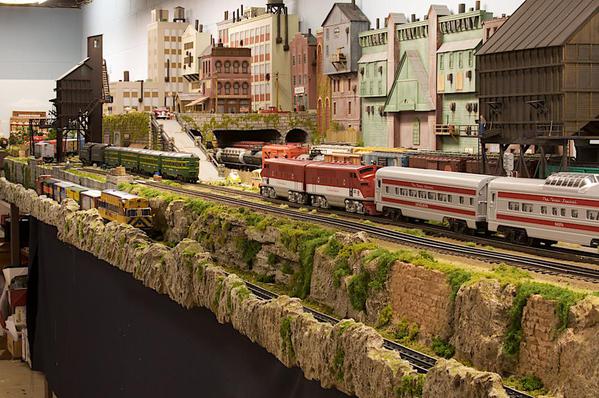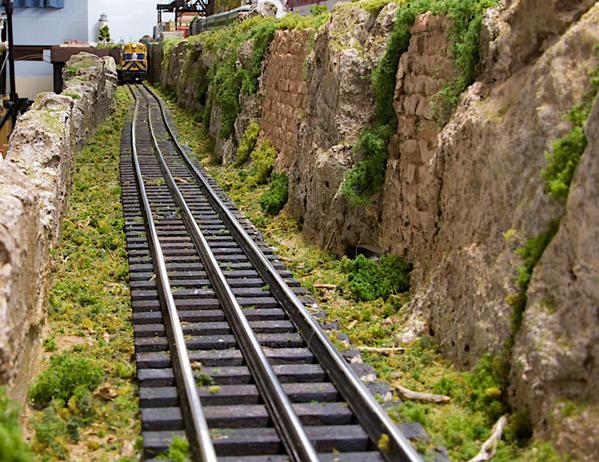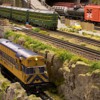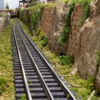Having just positioned the track on my new layout, I'll have a 30 inch radius curve with a 45 inch drop to the floor along the outside edge of the track. What will work best to minimize trains derailing and hitting the floor? I can add a raised lip to the outside edge of the track, say 1/2 inch deep and high, or add a plexiglas edge, or superelevate the track to move the center of gravity to make a derailment and subsequent drop less likely. The inside of the curve is filled, so a derailment in that direction would be safe. I'm open to ideas at this point because nothing is fastened down yet. Now is the perfect time to put some safeguards in place.
Yes, I can reposition the track so it is not so near the edge of the layout, but that kind of runs counter to the desire to have as much of a run as possible vs. the table space available.
What has worked for the forum members who have this situation?
Thanks,
Dale












